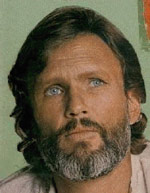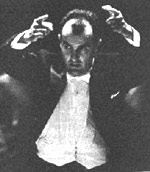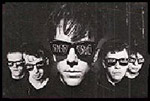Ashtrays in Mt Etna | |

| Lightning quick, with an itchy trigger finger. Spitting out miracles, turning cartwheels of flame in the skies, throat parched with ashen debris. Making ashtrays in Mt. Etna. There's something utterly compelling in that thought. The Blue Aeroplanes threw up the image like some excess waste way back when. In those days they ascended the giddy heights with a flex of the muscles, breaking in your heart, taking no prisoners. Leave your inhibitions at the door, they don't become you. So with dame Etna herself enjoying one of her periodic spats, chain smoking and billowing debris like Maria Callas, the Callas you find in Trout Fishing in America of course, I will assemble a collection of sounds to accompany the coil of lava flow. "Is that all there is?" asks the villager. Of course, replies the mountain, and here is some sonic beauty to match the visual poetry of ragged destruction. Side A. 1) First up, and tugging at the heart strings, John Sebastian. Captured live on a 1971 tour, his solo version of "Younger Girl" is a gorgeous piece of pure saudade. The giddy feeling accompanying the loss of something precious, the flash of memory of a younger face, a faded smile. Sebastian didn't need a technicolor Astrud Gilberto to sweeten his songs, his talent is allied to his own breezy insouciance. He can puncture the heart with jabs of frozen beauty. The multitalented Sebastian could hold any audience captive, and here, in the face of volcanic exhibitionism, he lulls this listener with stories of forgotten possibilities, beauty untold. 2) The Lovin' Spoonful auditioned to be The Monkees, it is true, but who needs a TV series to animate their prime moments? No, "Rain on the Roof" follows now, and can stand and fall on its own. Gorgeous sounds, like a Japanese film, capturing natural sounds and images with poise and rapt attention. Sitting in my hut a stone's throw from Etna's lava flow, I need a memory of rain and England's more sanguine climes to help wipe the dust from my eyes. 3) Felt- "Sandman's On the Rise". Lawrence could write songs like these in his sleep, which is possibly the case here. Freud couldn't resist writing about the sandman in connection with the threat of castration, which is lazy thinking in my book. The sandman can be a benevolent figure too I'm sure- here he sprinkles angel-hair fine gobbets of dust on my eyes. Like a Formula One driver's tear-off visor strips, my vision is wiped clean once more. 4) Time for a drink of something potent and refreshing. Nothing too caustic in these surroundings- a tumbler of Campari perhaps, neat, on ice. And to accompany it, nothing better than a blissful slice of Jimmy Buffett. Dismissed by some as the unthinking man's musical XXXX, vulgar music for the redneck in a disposable tin, the man had a way with a tune and a potent image on his early records. There's something of the calypso-loving, bleary-eyed with moonshine, all the time in the world feel of Robert Mitchum at his peak when Buffett hits form. It reminds me that Mitchum himself made some calypso records, which Rev-Ola once reissued. The title track of Buffett's "Son of a Son of a Sailor" is next up. On his record covers of the period, he has a Richard Brautigan look about him, which is matched by the carefree jauntiness of this one. In the face of fire and brimstone, he sings of a life spent on the beaches, in familiar bars. Wrapped in the cartoon amorality of a Fellini spiv, he trades rum for a walk with a zombie on the wide Sargasso sea. |

| 5) While the mood is mellow and breezy, time for Kris Kristofferson's "Help Me Make it Through the Night". The way this song ends is a total treat, a Wurlitzer-style keyboard tracing circles around the vocals and fading all too prematurely. It's used on the soundtrack to John Huston's Fat City, one of the finest boxing films, with a young Jeff Bridges and Stacy Keach. It plays over the end credits, after the knockout final scene where the pugs seem to age four-fold in one magnificent shot through a barroom mirror. Bobby Gillespie once compared Kristofferson in his heyday to Jesus, which makes perverse sense to me. I enjoy telling Christians Judas is the most interesting character in the gospels. It earns a double-take at the very least. I find K.K.'s efforts underappreciated: "Me and Bobby McGee" and "Sunday Morning Coming Down" are surely master classes in effortlessly conjuring dislocated states of mind. His acting in Peckinpah's Pat Garrett and Billy the Kid was enough to put Dylan in the shade, and Alan Rudolph's Trouble in Mind should be given its due as a high watermark of 80's filmmaking. Still, talk of Sam Peckinpah calls to mind unshaven dissoluteness, an unsavoury after hours queasiness. To refresh the palate and steady my shaking hands it's time for a side break, a blast of feral electricity to clear the air before the next discharge of volcanic matter. |

| Side B. 1) Luigi Nono: La lontananza nostalgica utopica futura. This is represented by one track from this hour- long musical experiment. Nono was one of Italy's true radicals, whom the fascists tried to suppress at various times, claiming at one stage that the double negative in his name was an indication of nihilistic, hence dangerous, intent. This piece is from later in his output, pitting a mobile violin against tape loops playing random sections of pre-recorded violin intonations. The interplay between the acoustic instrument and its distorted echoes can be blithely tranquil at times, but erupts from the tabula rasa with alarming ferocity. Nono admired the natural power of wind enormously, and the liner notes tell of him sleeping with open windows, during which gusts of wind caused objects in his rooms to fall and shatter. It reminds me of a tv ad from my youth for a brand of blank tape, which dramatized much the same scene, to the sound of Mussorgsky's Night on a Bare Mountain. Such things caused me to daydream as a boy. 2) Richard H. Kirk: "Insect Friends of Allah". This comes from the Cabaret Voltaire man's solo Disposable Half-Truths set from 1978. The lp as a whole has a relentlessly apocalyptic feel to it which outguns the Cabs themselves for dark industrial paranoid chatter. This track provides some respite: twitchy minimalist beats with a scratchy pattern of keyboards over drum machine. Shades of more familiar trips to the Orient such as "Yashar", it has a fragile, febrile grip as hypnotic as it is enigmatic. These insects burrow deeply into your subconscious, calling out for repeated listening. It plays neatly alongside the ruthless experimentalism of a Nono, Stockhausen or Ligeti. 3) Keeping the voltage at an almost unacceptably high level, Cecil Taylor is next, weighing in with a multi-tentacled prize squid of an effort. It is in the Brewing Luminous has just been reissued on hatOLOGY records, the renowned Swiss free jazz imprint, a cause for much rejoicing. It features Cecil and a very select band in awesome form live in 1980. Jimmy Lyons weaves some beguiling snake-like lines on alto sax, which set the tone for a performance which alternates savage clusters of formidable all-hands playing from Taylor with more serene counterpoints with his spartan group, featuring the violin of Ramsey Ameen and the drums of the mighty Sunny Murray. For the benefit of the compilation, I'll snip a ten-minute section from the continuous seventy-minute work as a taster of the rapturous heights attained by Taylor and his gymnastic pianism. 4) While the momentum is this sustained, the volcano watching could benefit from something a little more serene. The ideal candidate would be the lofty heights of Kirsten Flagstad performing Bach's "Erbarme dich, mein Gott", from his St. Matthew Passion. Again, it's music that holds its own without any religious trappings. Indeed, it was used repeatedly by Pasolini, on the soundtrack to his tale of Roman outcasts and pimping Accattone, and his own atheist Marxist take on The Gospel According to St. Matthew, shot in arid southern Italy. Flagstad has the presence of an Amazon warrior, and this piece impresses with its vocal conviction. The tinkling harpsichord and quaint string background of this version on a compilation on the wonderful Testament label seems almost superfluous by comparison. |

| 5) Pasolini would have been fond of That Petrol Emotion I'm sure, who tackled similar renegade themes in their best records, the first two lp's. Pasolini wrote an unfinished novel called Petrolio, and the Petrols threw down the gauntlet to indie-dance crossover pretenders with such razor's edge manifestos as "Creeping to the Cross" and the slogan "Agitate, Educate, Organize". Politics with a heart, and the best shades since Dylan in Don't Look Back. For this slot I've chosen "Dance Your Ass Off", a perfect synthesis of gut instinct and pounding intensity. 6) From that foray into pure adrenaline, the final track brings us back down to earth. From the Children of Jah compilation of killer late 70's reggae on the appropriately named Blood and Fire label, comes "Send Another Moses" by Lopez Walker. It's just the antidote needed to the scenes of furious impulsiveness outside this tiny shelter. While I collect the ashtrays forged from real furnaces and prepare to retreat from the mountainside, the song sends out its own plea. Calling for another Moses to be sent down from the mountain, it urges him to galvanize his people, "to whip them with the rod of direction". The music is beguilingly placid, the message all the sweeter and more seductive for it. Like a character from a Jules Verne novel, the intrepid traveller can seek out rest now. The ashtray is full again. The tape spools to an end. And back to the beginning again. Marino Guida 2001 |